Top Sights in Moscow
Moscow has an enormous amount of sights which are worth visiting including museums, galleries, monasteries, churches, monuments, parks and historical sites. There are so many sights that you cannot possibly see everything Moscow has to offer if you are just on a short visit to the capital. Therefore below you will find lists of what in our opinion are the top ten places, museums, religious sights, parks and monuments, to help you see as many of Moscow's most famous sights.
Top Places
Moscow Kremlin
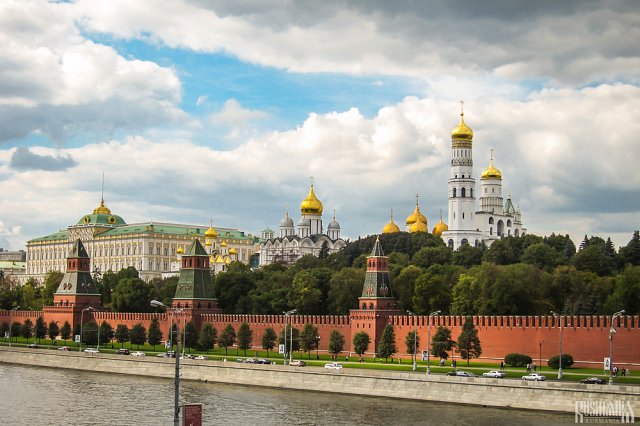
The word kremlin is used to describe fortresses found in many Russian cities, but when you talk about the Kremlin it is the Moscow Kremlin one thinks of. The first version of the Moscow Kremlin was erected in the current location on Borovitsky Hill... Read more »
Moscow Metro
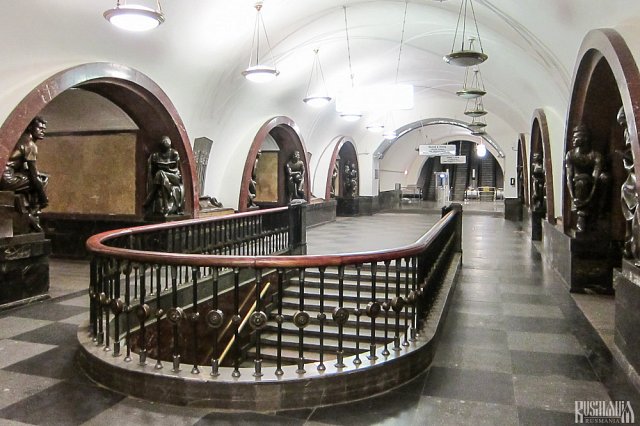
The Moscow Metro is often credited with being the most beautiful metro system in the world. When it was being designed it was not just envisaged as a means of getting from A to B but also as a celebration of the workers. Many of the... Read more »
Moscow State University
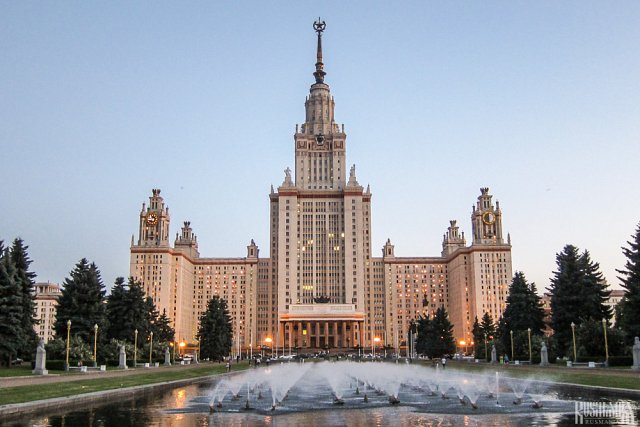
Perhaps the most impressive of the seven Stalin Skyscrapers is the main building of the Lomonosov Moscow State University which stands on the top of Vorobyovy Gory (Sparrow Hills). It is certainly the tallest of the seven standing at 182 metres tall or 240 metres tall if you... Read more »
Izmailovo Kremlin and Vernisazh
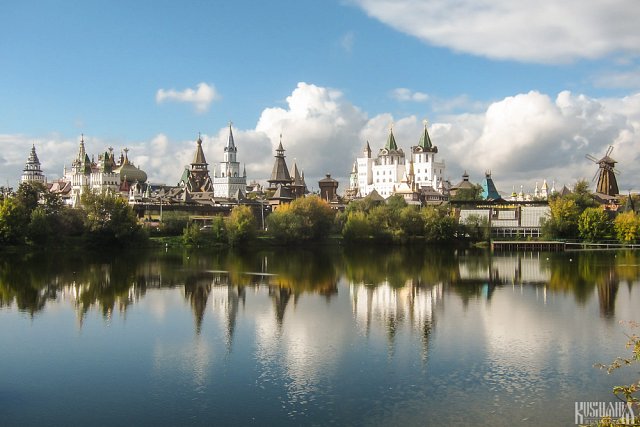
Not everybody knows that there is in fact a second kremlin in Moscow located in the area of the capital historically known as Izmailovo, behind the Soviet style Izmailovo hotel complex which was built for the 1980 Moscow Summer Olympic Games. Unlike the main Kremlin though, Izmailovo Kremlin... Read more »
VDNKh All-Russian Exhibition Centre
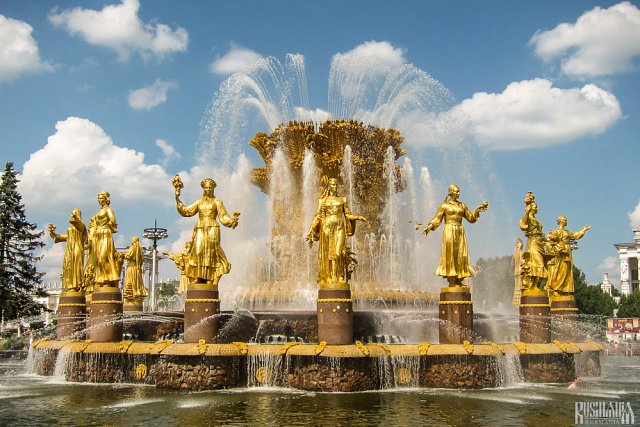
For anyone with an interest in the Soviet Union, the All-Russia Exhibition Centre in the north of Moscow is a must. The centre was officially opened in 1939 as the All-Union Agricultural Exhibition, but after the Second World War this was reconstructed and in 1959 the whole centre... Read more »
Old Arbat
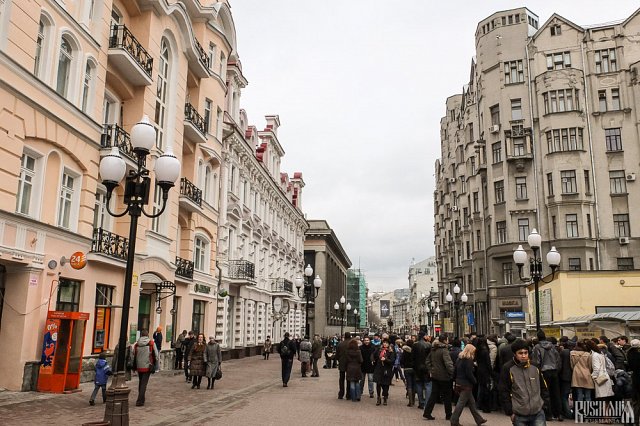
The pedestrian street of Ulitsa Arbat, which is commonly called Old Arbat to distinguish it from Ulitsa Novy Arbat (New Arbat Street), is one of the most famous streets in Moscow. The street has existed since at least the 15th century and became Moscow's first pedestrian zone in... Read more »
Bolshoi Theatre
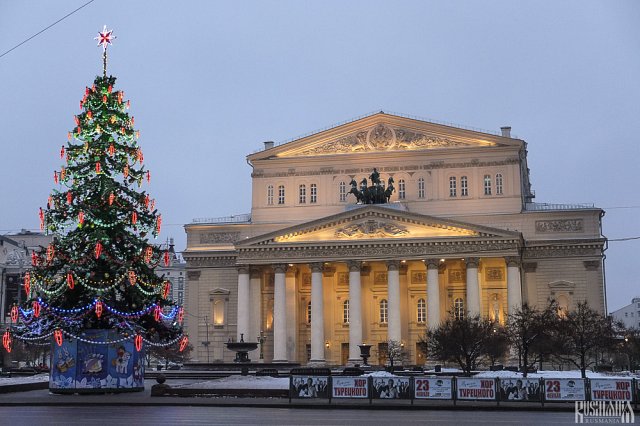
One of the most famous sights in Moscow is the world-famous Bolshoi Theatre. The theatre company was founded in 1776 by Prince Pyotr Urusov and the original theatre was opened in 1780 and was known as the Petrovsky Theatre due to its location on Ulitsa Petrovka. In 1805... Read more »
Moscow Nikulin Circus on Tsvetnoy Bulvar
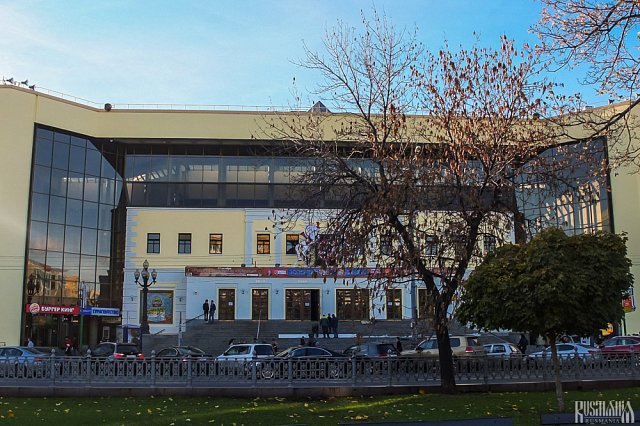
The oldest and most popular circus in Moscow is the circus on Tsvetnoy Bulvar. It was first opened in 1880 featuring gymnasts, clowns and animals. One of the most famous actors and clowns to work at the circus was the clown and actor Yuri Nikulin who became the... Read more »
Bunker-42 at Taganka
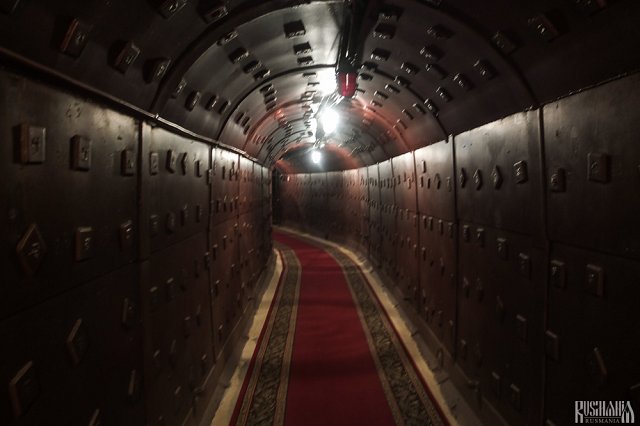
Bunker-42 at Taganka is a cold war era bunker located 65 metres down which has now been converted into a Cold War Museum and a conference centre for holding corporate events or parties with a difference. Construction of the bunker was started in the 1950s and in 1956... Read more »
Sadunovsky Banya
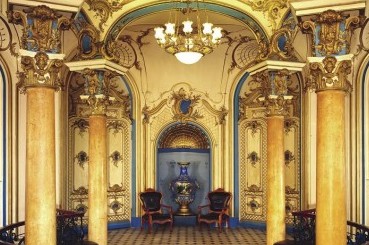
Experiencing a Russian banya (steam bath) is certainly worth doing as a real Russian experience. If you choose to do it in style the Sadunovsky Baths is the place for you. Opened in 1808, the Sadunovsky Baths are the oldest and most prestigious public baths in Moscow, and... Read more »
Top Monasteries, Cathedrals and Churches
St Basil's Cathedral
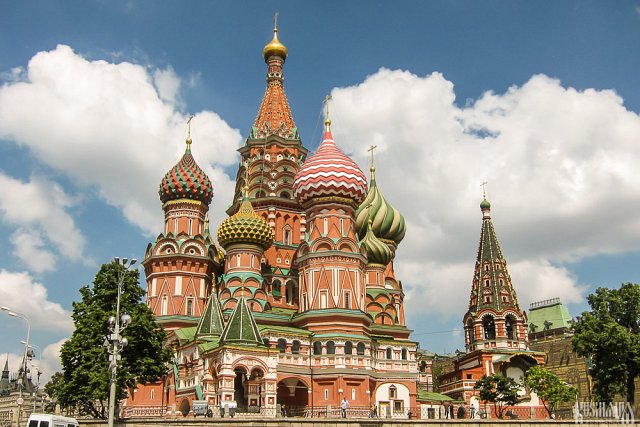 The most recognisable symbol of Moscow and Russia is probably St Basil's Cathedral with its brightly-coloured domes and it is often compared to a fairy-tale wedding cake. The cathedral was built between 1555 and 1561 on the orders of Tsar Ivan the Terrible to commemorate Russia's conquest of... Read more »
The most recognisable symbol of Moscow and Russia is probably St Basil's Cathedral with its brightly-coloured domes and it is often compared to a fairy-tale wedding cake. The cathedral was built between 1555 and 1561 on the orders of Tsar Ivan the Terrible to commemorate Russia's conquest of... Read more »
Novodevichy Convent
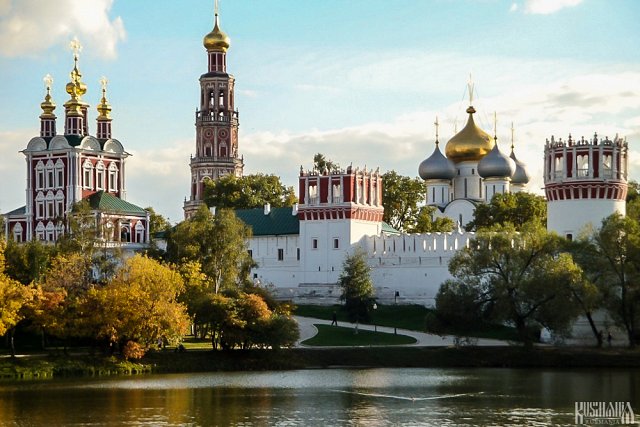 One of Moscow's most beautiful sights is the Novodevichy Convent which was included on the UNESCO World Heritage List in 2004. Novodevichy Convent, whose name translates as New Maiden Convent, was founded in 1524 on the orders of Grand Prince Vasili III of Moscow to celebrate Russia's recapture... Read more »
One of Moscow's most beautiful sights is the Novodevichy Convent which was included on the UNESCO World Heritage List in 2004. Novodevichy Convent, whose name translates as New Maiden Convent, was founded in 1524 on the orders of Grand Prince Vasili III of Moscow to celebrate Russia's recapture... Read more »
Christ the Saviour Cathedral
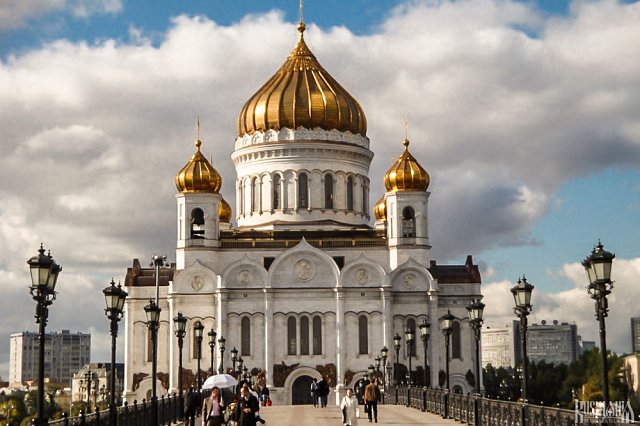 The Christ the Saviour Cathedral is Russia's most important cathedral and its largest, having been designed to accommodate 10,000 people. The current version is actually the cathedral's second incarnation. Construction of the original version was started in 1839 under the project of the famous architect Konstantin... Read more »
The Christ the Saviour Cathedral is Russia's most important cathedral and its largest, having been designed to accommodate 10,000 people. The current version is actually the cathedral's second incarnation. Construction of the original version was started in 1839 under the project of the famous architect Konstantin... Read more »
Donskoy Monastery
 Donskoy Monastery is one of the best surviving examples of a fortified monastery and as it is located a little away from the centre you will find a lot less tourists here than, for example, Novodevichy Convent. The monastery was founded on the order of Tsar Feodor I... Read more »
Donskoy Monastery is one of the best surviving examples of a fortified monastery and as it is located a little away from the centre you will find a lot less tourists here than, for example, Novodevichy Convent. The monastery was founded on the order of Tsar Feodor I... Read more »
Intercession Church at Fili
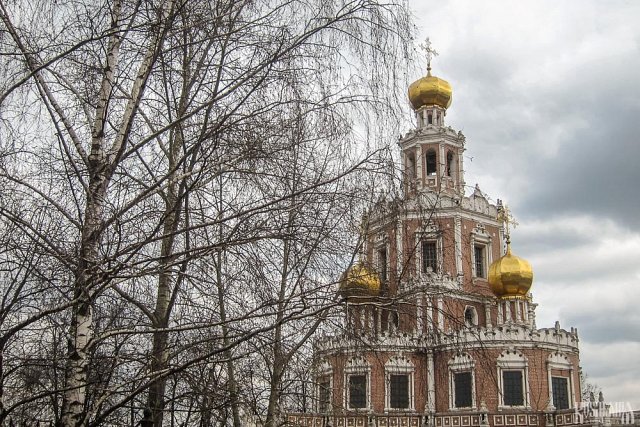 Although the Intercession Church at Fili is rather remote from the city centre it is nevertheless worth visiting as it is one of the best surviving examples as what is known as the Naryshkin baroque architectural style of churches. The church was built between 1690 and 1694 using... Read more »
Although the Intercession Church at Fili is rather remote from the city centre it is nevertheless worth visiting as it is one of the best surviving examples as what is known as the Naryshkin baroque architectural style of churches. The church was built between 1690 and 1694 using... Read more »
Rogozhsky Old-Believers Settlement
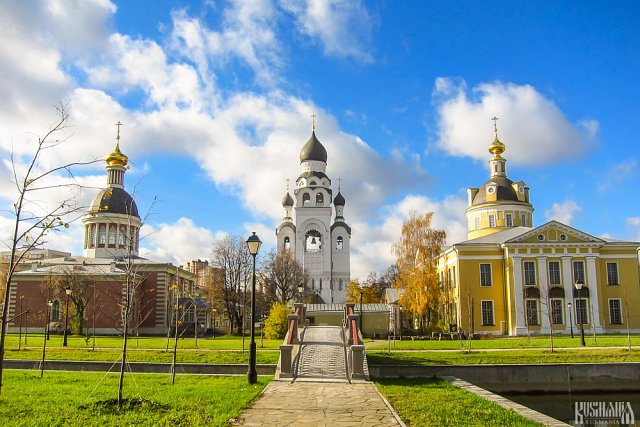 Located just outside the Third Ring Road, approximately half way between Ploschad Ilicha and Aviamotornaya metro stations is the Rogozhsky Old-Believers Settlement and the Rogozhskoe Cemetery. The settlement began in 1771 after the establishment of the Rogozhskoe Cemetery. Empress Catherine the Great initially allowed... Read more »
Located just outside the Third Ring Road, approximately half way between Ploschad Ilicha and Aviamotornaya metro stations is the Rogozhsky Old-Believers Settlement and the Rogozhskoe Cemetery. The settlement began in 1771 after the establishment of the Rogozhskoe Cemetery. Empress Catherine the Great initially allowed... Read more »
Novospassky Monastery
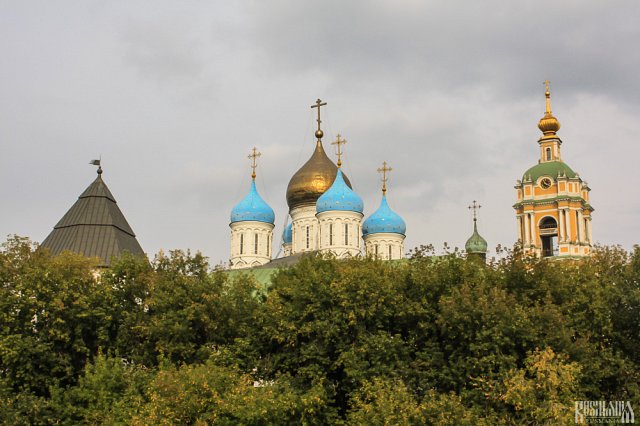 The Novospassky Monastery was founded in 1490 on the orders of Grand Prince Ivan III. Upon its foundation the monks of the monastery surrounding the Transfiguration of the Saviour Cathedral inside the Kremlin were transferred here, hence the monastery's name Novospassky meaning the 'New Saviour'. The monastery was... Read more »
The Novospassky Monastery was founded in 1490 on the orders of Grand Prince Ivan III. Upon its foundation the monks of the monastery surrounding the Transfiguration of the Saviour Cathedral inside the Kremlin were transferred here, hence the monastery's name Novospassky meaning the 'New Saviour'. The monastery was... Read more »
Spaso-Andronikov Monastery
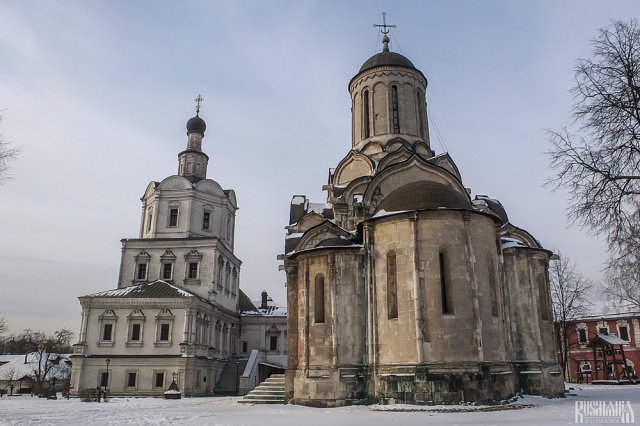 The Spaso-Andronikov Monastery was founded in 1357 by Metropolitan Alexius (Aleksi) allegedly in gratitude for his salvation during a storm on a journey to Constantinople. The monastery gets the first part of its name from the Miracle-Image of the Saviour (Spas), a copy of which was brought back... Read more »
The Spaso-Andronikov Monastery was founded in 1357 by Metropolitan Alexius (Aleksi) allegedly in gratitude for his salvation during a storm on a journey to Constantinople. The monastery gets the first part of its name from the Miracle-Image of the Saviour (Spas), a copy of which was brought back... Read more »
Vysoko-Petrovsky Monastery
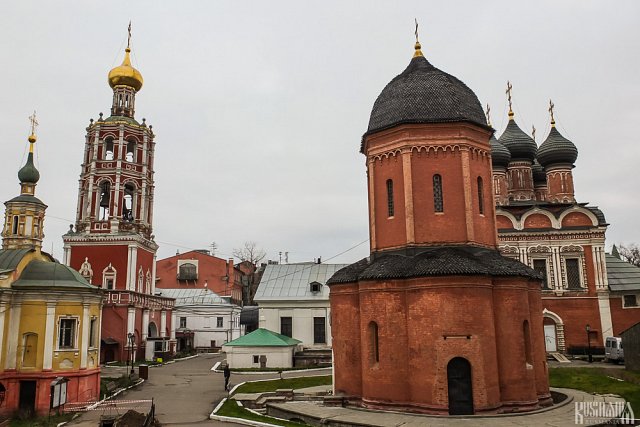 The first mention of the Vysoko-Petrovsky Monastery came in 1377 and it is traditionally considered to have been founded by Metropolitan Peter, who moved to Moscow in 1325 and died in 1326. The monastery was closed in 1918 although its Our Lady of Bogolyubovo Church remained open until... Read more »
The first mention of the Vysoko-Petrovsky Monastery came in 1377 and it is traditionally considered to have been founded by Metropolitan Peter, who moved to Moscow in 1325 and died in 1326. The monastery was closed in 1918 although its Our Lady of Bogolyubovo Church remained open until... Read more »
Krutitskoe Podvorye
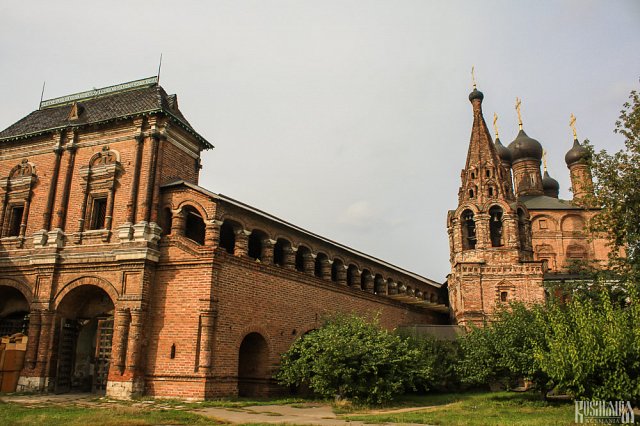 Krutitskoe Podvorye, now a podvorye (embassy church) of the patriarch, started its life as the podvorye of the Metropolitan of Sarai - the capital of the Golden Horde. The name Krutitskoe comes from the word Krutitsy which was given to this area of Moscow due to its steep... Read more »
Krutitskoe Podvorye, now a podvorye (embassy church) of the patriarch, started its life as the podvorye of the Metropolitan of Sarai - the capital of the Golden Horde. The name Krutitskoe comes from the word Krutitsy which was given to this area of Moscow due to its steep... Read more »
Top Parks and Estates
Kolomenskoe Estate
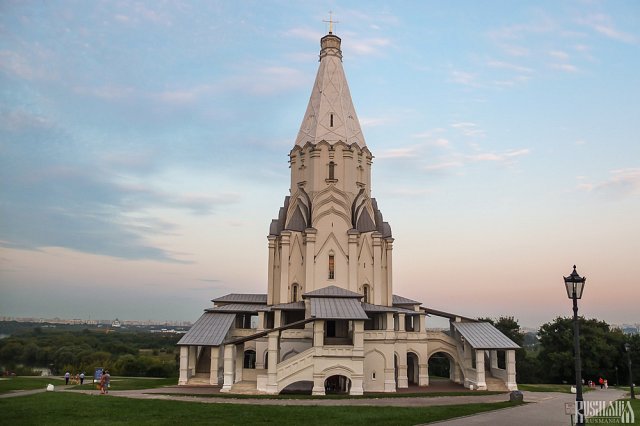 The Kolomenskoe Estate runs all the way along the right-bank of the River Moscow from Kolomenskaya to Kashirskaya metro stations and is one of the most popular sights in Moscow outside of the city centre, favoured by both locals and tourists. Historically the Kolomenskoe Estate was the location... Read more »
The Kolomenskoe Estate runs all the way along the right-bank of the River Moscow from Kolomenskaya to Kashirskaya metro stations and is one of the most popular sights in Moscow outside of the city centre, favoured by both locals and tourists. Historically the Kolomenskoe Estate was the location... Read more »
Gorky Park
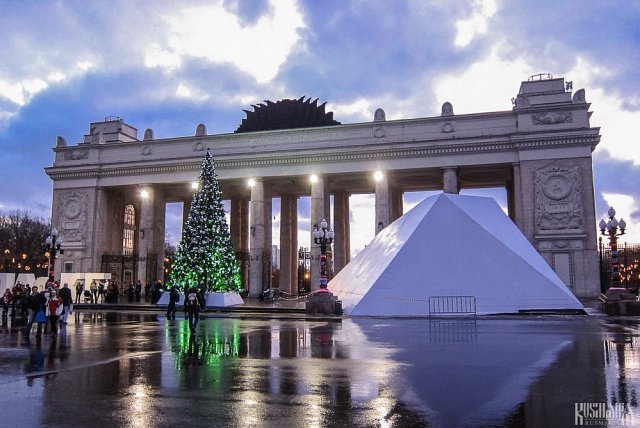 Gorky Park, or the Maksim Gorky Central Park of Culture and Rest to give it its full name, was established along the bank of the River Moskva in 1928 and named in honour of the author Maksim Gorky in 1932. The park's main architect was Konstantin Melnikov who... Read more »
Gorky Park, or the Maksim Gorky Central Park of Culture and Rest to give it its full name, was established along the bank of the River Moskva in 1928 and named in honour of the author Maksim Gorky in 1932. The park's main architect was Konstantin Melnikov who... Read more »
Victory Park
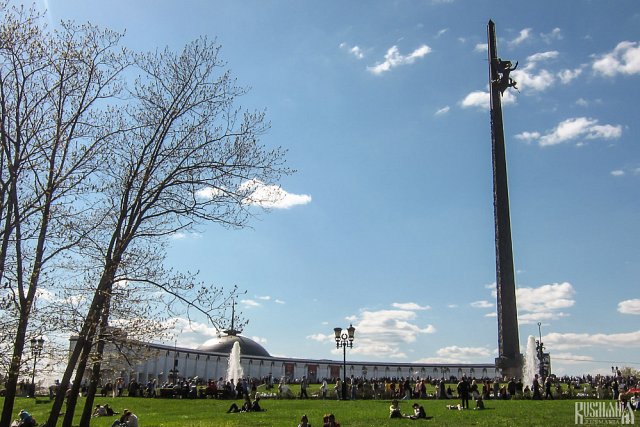 One of the main sights in the west of Moscow is Victory Park (Park Pobedy) which is located on what is known as Poklonnaya Gora (Submission Hill) as historically this was where guests coming to Moscow from the West were expected to bow down (poklonitsya) and pay homage. ... Read more »
One of the main sights in the west of Moscow is Victory Park (Park Pobedy) which is located on what is known as Poklonnaya Gora (Submission Hill) as historically this was where guests coming to Moscow from the West were expected to bow down (poklonitsya) and pay homage. ... Read more »
Kuskovo Estate
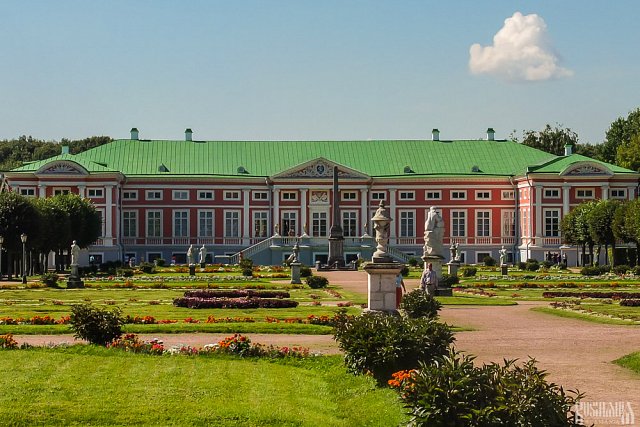 The Kuskovo Estate served as the summer residence of the Sheremetev noble family for around 300 years. Kuskovo first became owned by the Sheremetevs in the late 16th century. It is believed that the name is derived from the Russian word for piece - 'kuskok', as when the... Read more »
The Kuskovo Estate served as the summer residence of the Sheremetev noble family for around 300 years. Kuskovo first became owned by the Sheremetevs in the late 16th century. It is believed that the name is derived from the Russian word for piece - 'kuskok', as when the... Read more »
Tsaritsyno Estate
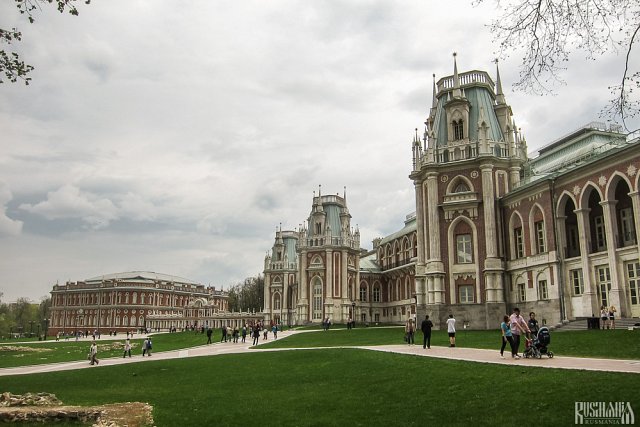 Tsaritsyno Estate's rich and interesting history goes back to the early 17th century when it was known as Chyornaya Gryaz (Black Mud) and at one point belonged to Boris Godunov's sister - Tsaritsa Irina Fyodorovna. Under Peter the Great the land was given to Prince Dmitrie Cantemir of... Read more »
Tsaritsyno Estate's rich and interesting history goes back to the early 17th century when it was known as Chyornaya Gryaz (Black Mud) and at one point belonged to Boris Godunov's sister - Tsaritsa Irina Fyodorovna. Under Peter the Great the land was given to Prince Dmitrie Cantemir of... Read more »
Muzeon Art Park
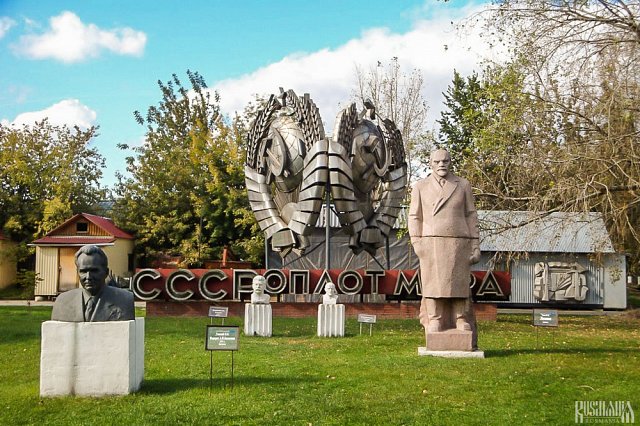 The Muzeon Art Park was established in 1991 in the park on Krymskaya Naberezhnaya behind the State Tretyakov Gallery at Krymsky Val. The park has many sculptures but is most famous for the Soviet-era statues which were moved here after the fall of the USSR: statues of Lenin,... Read more »
The Muzeon Art Park was established in 1991 in the park on Krymskaya Naberezhnaya behind the State Tretyakov Gallery at Krymsky Val. The park has many sculptures but is most famous for the Soviet-era statues which were moved here after the fall of the USSR: statues of Lenin,... Read more »
Apothecary's Garden of the Botanical Garden of MSU
The Apothecary's Garden was founded in 1706 by Peter the Great to provide a source of herbs for medicinal use. It is believed that the tsar even planted three trees himself. The garden was purchased by the Moscow State University in 1805 when their original garden was closed... Read more »
Izmailovo Estate
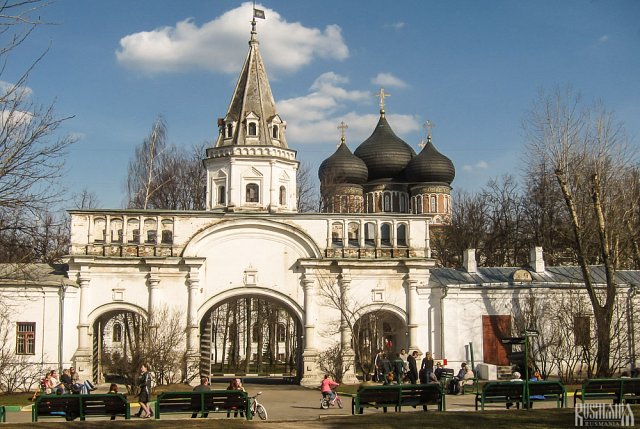 In the 17th century a royal estate was built in the historical village of Izmailovo which was then located outside of Moscow. The estate was built on an island surrounded by ponds. The land had been held by the Romanovs since 1571 when it was given by Ivan... Read more »
In the 17th century a royal estate was built in the historical village of Izmailovo which was then located outside of Moscow. The estate was built on an island surrounded by ponds. The land had been held by the Romanovs since 1571 when it was given by Ivan... Read more »
Neskuchy Gardens
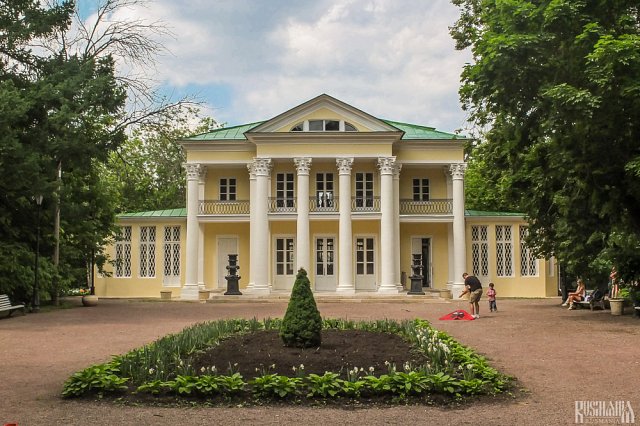 On the other side of Titovsky Proezd, Gorky Park becomes Neskuchny Gardens which run all the way along the bank of the River Moskva to the Third Ring Road. Today the gardens are run as part of Gorky Park. The word Neskuchny translates into English as Not Boring,... Read more »
On the other side of Titovsky Proezd, Gorky Park becomes Neskuchny Gardens which run all the way along the bank of the River Moskva to the Third Ring Road. Today the gardens are run as part of Gorky Park. The word Neskuchny translates into English as Not Boring,... Read more »
Sokolniki Park
Sokolniki Park has existed in some from since the 17th century when it was used by the tsars for hunting with falcons, from where it gets its name ('sokol' is the Russian for falcon). Paths were later laid out in the park in the shape of a fan.... Read more »
Top Museums
State Tretyakov Gallery
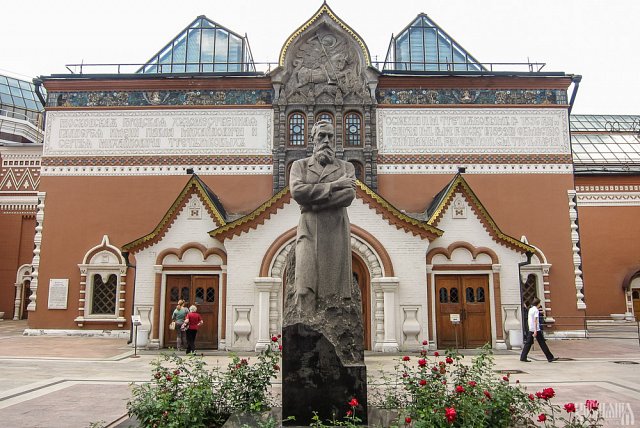 The State Tretyakov Gallery is one of the foremost art galleries in the world which exhibits some of the masterpieces of Russian art and annually attracts over one million visitors. The gallery bears the name of its founder Pavel Tretyakov who began collecting works of art in the... Read more »
The State Tretyakov Gallery is one of the foremost art galleries in the world which exhibits some of the masterpieces of Russian art and annually attracts over one million visitors. The gallery bears the name of its founder Pavel Tretyakov who began collecting works of art in the... Read more »
Armoury Chamber
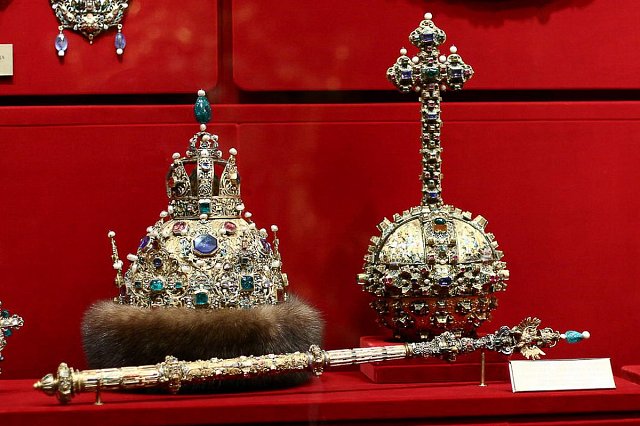 The Armoury Chamber which was built just after the Grand Kremlin Palace in 1851 now serves as a treasure chamber exhibiting thousands of priceless items of various ages and origins. The Chambers comprise two floors with nine halls in total. On the first floor Halls 1 and 2... Read more »
The Armoury Chamber which was built just after the Grand Kremlin Palace in 1851 now serves as a treasure chamber exhibiting thousands of priceless items of various ages and origins. The Chambers comprise two floors with nine halls in total. On the first floor Halls 1 and 2... Read more »
State History Museum
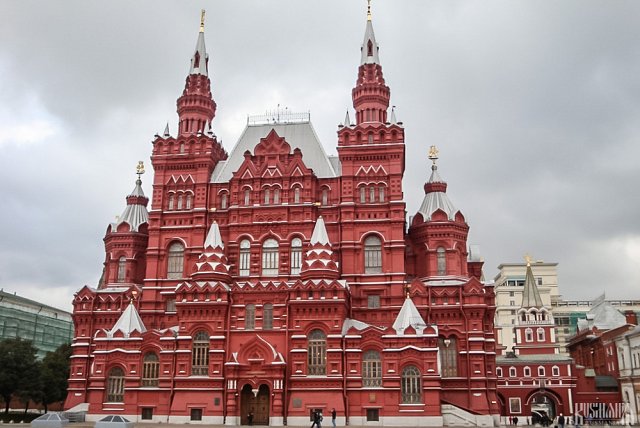 Standing at the north side of Red Square is the State History Museum. The museum was founded in 1872 by an edict of Emperor Alexander II and the building which houses it was built between 1875 and 1881 in the Russian Revival style. Today the museum is the... Read more »
Standing at the north side of Red Square is the State History Museum. The museum was founded in 1872 by an edict of Emperor Alexander II and the building which houses it was built between 1875 and 1881 in the Russian Revival style. Today the museum is the... Read more »
Pushkin Museum of Fine Arts
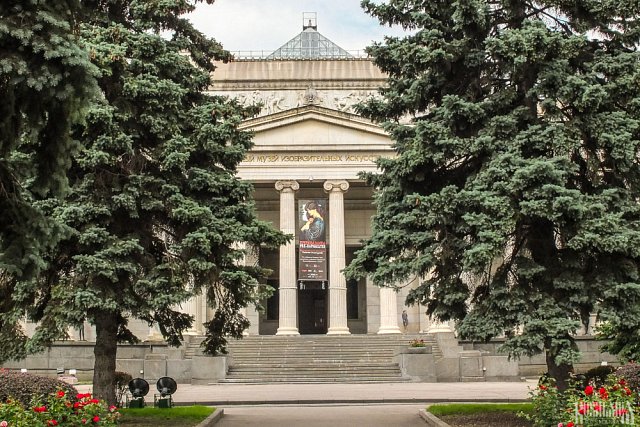 The Pushkin Museum of Fine Arts is the largest museum of European art in Moscow and a must for art lovers. The initiative to open a museum of art in Moscow came from the professor Ivan Tsvetaev (father of the poet Marina Tsvetaeva) who managed to persuade millionaires... Read more »
The Pushkin Museum of Fine Arts is the largest museum of European art in Moscow and a must for art lovers. The initiative to open a museum of art in Moscow came from the professor Ivan Tsvetaev (father of the poet Marina Tsvetaeva) who managed to persuade millionaires... Read more »
Cosmonautics Memorial Museum
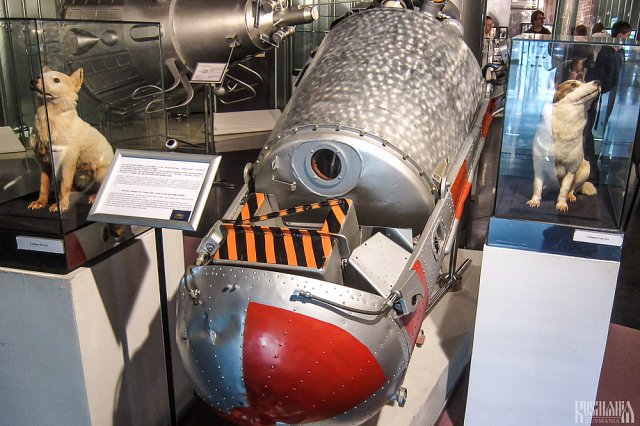 Behind the Conquerors of Space Monument in its base is the Cosmonautics Memorial Museum (more commonly known as the Space Museum), which was first opened in 1981 as part of the 20th anniversary celebrations of Yuri Gagarin's historic space flight. In 2006 the museum was closed for large-scale... Read more »
Behind the Conquerors of Space Monument in its base is the Cosmonautics Memorial Museum (more commonly known as the Space Museum), which was first opened in 1981 as part of the 20th anniversary celebrations of Yuri Gagarin's historic space flight. In 2006 the museum was closed for large-scale... Read more »
Central Museum of the Great Patriotic War
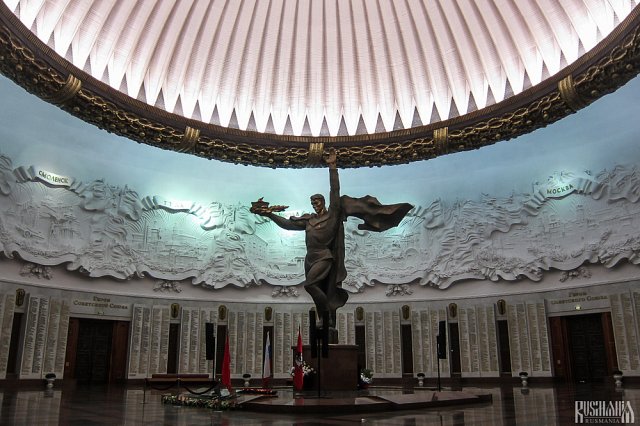 The museum was opened in 1995 along with Victory Park itself and details the course of the war and the Soviet victory. Among the more standard exhibitions of documents, photographs, videos and items, the museum also includes six dioramas featuring... Read more »
The museum was opened in 1995 along with Victory Park itself and details the course of the war and the Soviet victory. Among the more standard exhibitions of documents, photographs, videos and items, the museum also includes six dioramas featuring... Read more »
State Central Museum of Modern Russian History
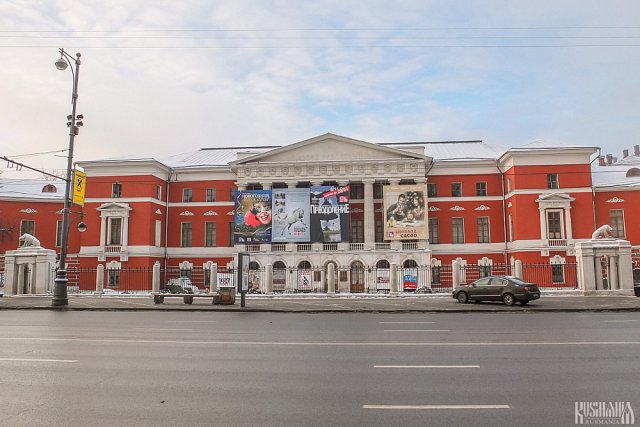 The State Central Museum of Modern Russian History is located in the grand building of what was once the Moscow English Club. In 1917 the building was given over to be used as a museum dedicated to the Russian Revolution. In 1998 the museum was renamed the Museum... Read more »
The State Central Museum of Modern Russian History is located in the grand building of what was once the Moscow English Club. In 1917 the building was given over to be used as a museum dedicated to the Russian Revolution. In 1998 the museum was renamed the Museum... Read more »
Battle of Borodino Museum-Panorama
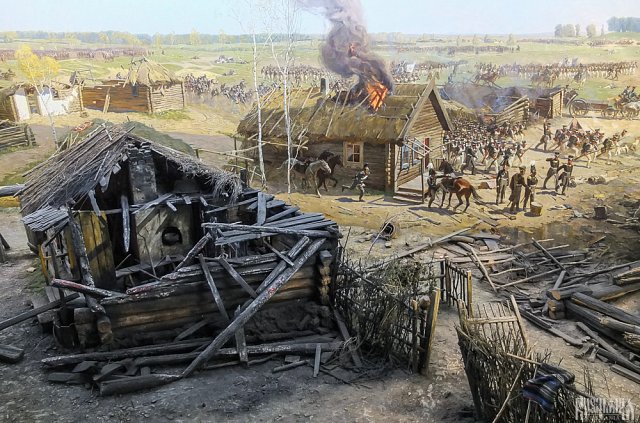 The Battle of Borodino Museum-Panorama was opened in 1962 to mark the 150th anniversary of the most significant battle during Russia's war against Napoleon. However the diorama itself was created by Russian panoramic painter Franz Roubaud in 1912 on the 100th anniversary of battle. In addition to the... Read more »
The Battle of Borodino Museum-Panorama was opened in 1962 to mark the 150th anniversary of the most significant battle during Russia's war against Napoleon. However the diorama itself was created by Russian panoramic painter Franz Roubaud in 1912 on the 100th anniversary of battle. In addition to the... Read more »
Russian Icon Museum
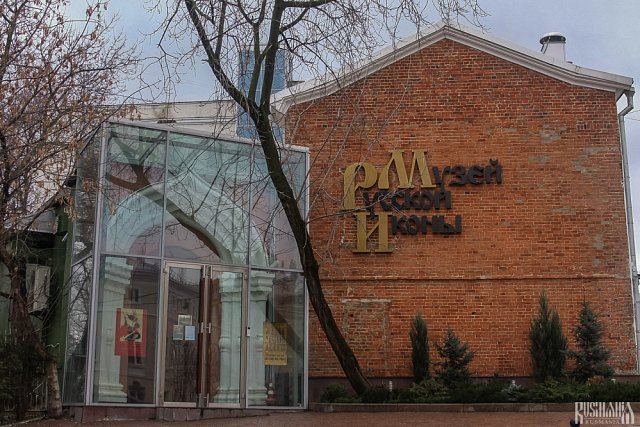 The Russian Icon Museum is a private museum which was founded in 2006 by the business man and icon-collector Mikhail Abramov. In 2010 the museum moved to this specially-refurbished mansion on Ulitsa Goncharnaya. Today it boasts over 4000 exhibits including over 800 icons, including Byzantine examples from the... Read more »
The Russian Icon Museum is a private museum which was founded in 2006 by the business man and icon-collector Mikhail Abramov. In 2010 the museum moved to this specially-refurbished mansion on Ulitsa Goncharnaya. Today it boasts over 4000 exhibits including over 800 icons, including Byzantine examples from the... Read more »
Gulag Museum
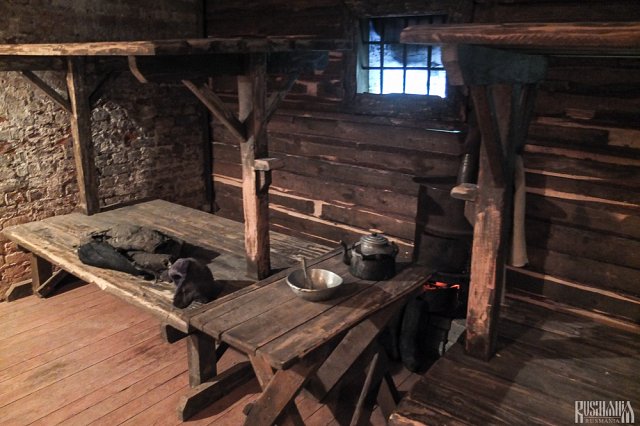 Nestled among Petrovka's designer shops, is one of the few museums in Russia dedicated to the system of forced labour camps set up under Stalin and known as the Gulag. The museum was founded in 2001 and it first opened its doors to the public in 2004. The... Read more »
Nestled among Petrovka's designer shops, is one of the few museums in Russia dedicated to the system of forced labour camps set up under Stalin and known as the Gulag. The museum was founded in 2001 and it first opened its doors to the public in 2004. The... Read more »
Top Monuments
Worker and Kolkhoz Woman Monument
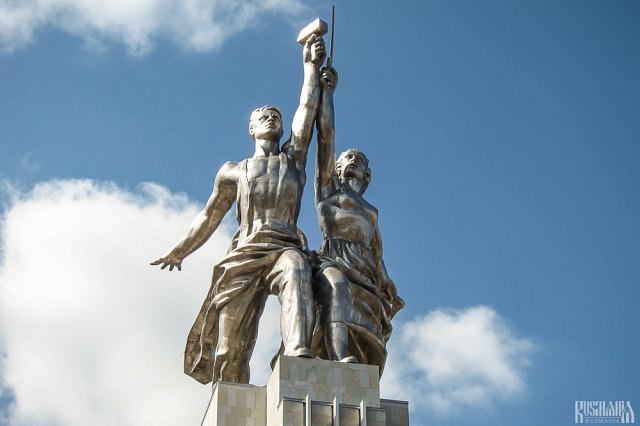 Just outside the All-Russia Exhibition Centre is one of the most impressive and most iconic statues in Russia - architect Vera Mukhina's masterpiece called the Worker and Kolkoz Woman Monument. The statue is an example of socialist realism at its best and features perfect specimens of a Soviet... Read more »
Just outside the All-Russia Exhibition Centre is one of the most impressive and most iconic statues in Russia - architect Vera Mukhina's masterpiece called the Worker and Kolkoz Woman Monument. The statue is an example of socialist realism at its best and features perfect specimens of a Soviet... Read more »
Conquerors of Space Monument
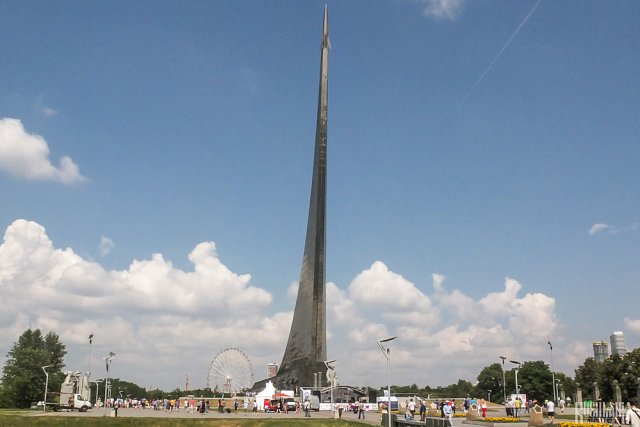 One of several major landmarks visible from outside VDNKh metro is the Conquerors of Space Monument which takes the form of a rocket taking off with the base of the monument resembling the plume from the exhaust. In total it is 107 metres tall. The monument was opened... Read more »
One of several major landmarks visible from outside VDNKh metro is the Conquerors of Space Monument which takes the form of a rocket taking off with the base of the monument resembling the plume from the exhaust. In total it is 107 metres tall. The monument was opened... Read more »
Yuri Gagarin Monument
One of the best statues in Moscow is the iconic Yuri Gagarin Monument which is found on Ploschad Gagarina on Leninsky Prospekt. The monument was erected in 1980 in the run up to the 1980 Olympic Games. It consists of a tall pedestal upon which stands a Soviet... Read more »
Peter the Great Monument
 One of the most controversial sculptures in Moscow is the massive statue of Peter the Great by the sculptor Zurab Tsereteli. The statue was unveiled in 1997 on the tip of the western end of Balchug Island where the Vodootvodny Canal and River Moskva meet. In total the... Read more »
One of the most controversial sculptures in Moscow is the massive statue of Peter the Great by the sculptor Zurab Tsereteli. The statue was unveiled in 1997 on the tip of the western end of Balchug Island where the Vodootvodny Canal and River Moskva meet. In total the... Read more »
Tomb of the Unknown Soldier
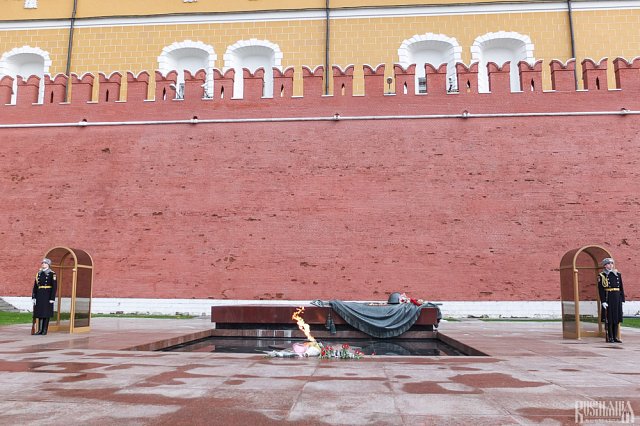 At the start of Aleksandrovsky Gardens is Russia's main Tomb of the Unknown Soldier, dedicated to all the Soviet soldiers killed in the Second World War. The tomb is decorated with a sculpture of a helmet, a laurel branch and a banner. In front of this there is an eternal flame and the inscription... Read more »
At the start of Aleksandrovsky Gardens is Russia's main Tomb of the Unknown Soldier, dedicated to all the Soviet soldiers killed in the Second World War. The tomb is decorated with a sculpture of a helmet, a laurel branch and a banner. In front of this there is an eternal flame and the inscription... Read more »
Aleksandr Pushkin Monument
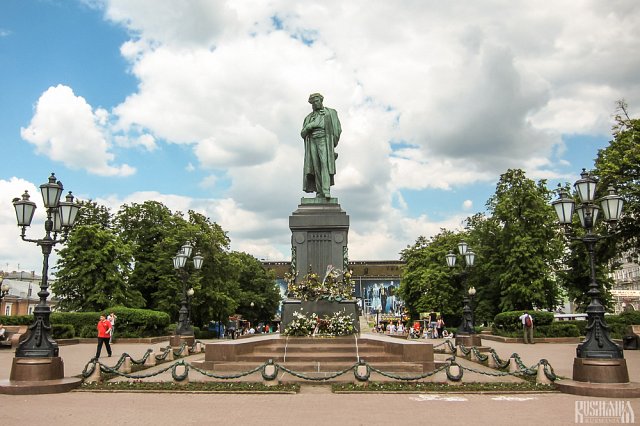 One of the most famous statues in Moscow is that of Aleksandr Pushkin which stands on Pushkinskaya Ploschad. Out of the hundreds of Pushkin monuments around Russian, this one is considered the country's main monument to Russia's most beloved poet and was unveiled during a ceremony in 1880.... Read more »
One of the most famous statues in Moscow is that of Aleksandr Pushkin which stands on Pushkinskaya Ploschad. Out of the hundreds of Pushkin monuments around Russian, this one is considered the country's main monument to Russia's most beloved poet and was unveiled during a ceremony in 1880.... Read more »
"Children - the Victims of Adult Vices"
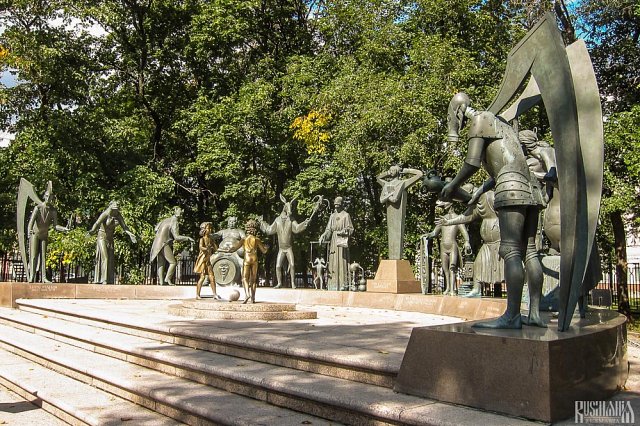 A more unusual monument on Bolotnaya Ploschad is the composition of sculptures entitled Children - the Victims of Adult Vices, which is the work of the controversial sculptor Mikhail Shemyakin. In the centre of the compositions are statues of two blindfolded children playing and they are surrounded... Read more »
A more unusual monument on Bolotnaya Ploschad is the composition of sculptures entitled Children - the Victims of Adult Vices, which is the work of the controversial sculptor Mikhail Shemyakin. In the centre of the compositions are statues of two blindfolded children playing and they are surrounded... Read more »
Yuri Dolgoruky Monument
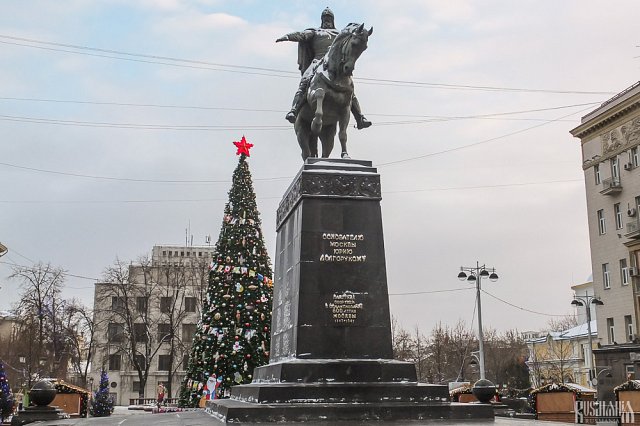 Moscow is considered to have been founded by Prince Yuri Dolgoruky in 1147. Dolgoruky was born around the turn of the 12th century and became the Prince of Rostov-Suzdal and then the Grand Prince of Kiev. This equestrian statue of him was unveiled in 1954. Like most statues... Read more »
Moscow is considered to have been founded by Prince Yuri Dolgoruky in 1147. Dolgoruky was born around the turn of the 12th century and became the Prince of Rostov-Suzdal and then the Grand Prince of Kiev. This equestrian statue of him was unveiled in 1954. Like most statues... Read more »
Minin and Pozharsky Monument
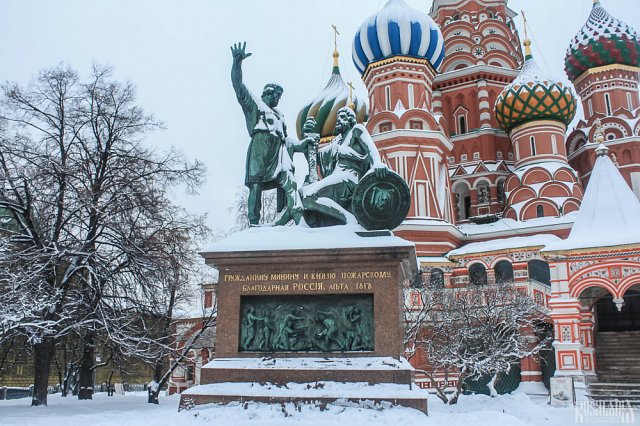 Located just outside of St Basil's Cathedral is a monument to Kuzma Minin and Prince Dmitri Pozharsky. The two men were the leaders of the Second Volunteer Army which successfully liberated Moscow from Polish interventionists in 1612 during the period known as the Times of Trouble. The monument... Read more »
Located just outside of St Basil's Cathedral is a monument to Kuzma Minin and Prince Dmitri Pozharsky. The two men were the leaders of the Second Volunteer Army which successfully liberated Moscow from Polish interventionists in 1612 during the period known as the Times of Trouble. The monument... Read more »
Vladimir Lenin Monument on Kaluzhskaya Ploschad
Kaluzhskaya Ploschad (Kaluga Square) is dominated by both the Soviet-style headquarters of the Ministry of Internal Affairs and the bronze statue of Vladimir Lenin. The monument was unveiled in 1985, making it one of the last Lenin statues to be erected in the country, and is the work... Read more »

